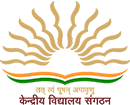The Joint Entrance Examination (Advanced) 2018 will be conducted by the IITs under the guidance of the Joint Admission Board (JAB) 2018. The performance of a candidate in this examination will form the basis for admission to the Bachelor’s, Integrated Master’s and Dual Degree programs (entry at the 10+2 level) in all the IITs. The decisions of the JAB 2018 will be final in all matters related to JEE (Advanced) 2018 and admission to IITs.
The examination consists of two papers, Paper 1 and Paper 2, each of three hours duration and will be held as per the following schedule:
| Item |
Day |
Date |
Time |
Session |
| Paper-1 |
Sunday |
20-May-2018 |
09:00 to 12:00 IST |
Session 1 |
| Paper-2 |
Sunday |
20-May-2018 |
14:00 to 17:00 IST |
Session 2 |
Both the papers are compulsory. The exam will be held in fully computer-based test mode.
The schedule will remain the same even if the day of examination is declared a public holiday.
Eligibility Criteria For Indian Nationals (including PIO/OCI For Appearing In Jee (Advanced) 2018
All the candidates must fulfil each and every one of the following five criteria to appear in JEE (Advanced) 2018.
Criterion 1 – Performance in JEE (Main) 2018: Candidates should be among the top 2,24,000* (including all categories) in Paper-1 of JEE (Main) 2018.
The percentages of various categories of candidates to be shortlisted are: 27% for OBC-NCL, 15% for SC, 7.5% for ST and the remaining 50.5% is OPEN for all. Within each of these four categories, 5% horizontal reservation is available for PwD candidates.
The following table show the order to be followed while choosing top 2,24,000* candidates in various categories based on the performance in Paper-1 of JEE (Main) 2018.
Category-wise distribution of top 2,24,000* candidates (Criterion 1):
| ORDER |
CATEGORY |
Number of "Top" Ccandidates |
| 1 |
OPEN |
1,07,464 |
Total 1,13,120 |
| 2 |
OPEN-PwD |
5,656 |
| 3 |
OBC-NCL |
57,456 |
Total 60,480 |
| 4 |
OBC-NCL-PwD |
3,024 |
| 5 |
SC |
31,920 |
Total 33,600 |
| 6 |
SC-PwD |
1,680 |
| 7 |
ST |
15,960 |
Total 16,800 |
| 8 |
ST-PwD |
840 |
* The total number of candidates can be slightly greater than 2,24,000 in the presence of “tied” ranks/scores in any category.
Criterion 2 – Age limit: Candidates should have been born on or after October 1, 1993. Five years relaxation is given to SC, ST and PwD candidates, i.e., these candidates should have been born on or after October 1, 1988.
Criterion 3 – Number of attempts: A candidate can attempt JEE (Advanced) a maximum of two times in consecutive years.
Criterion 4 – Appearance in Class XII (or equivalent) examination: A candidate should have appeared for the Class XII (or equivalent) examination for the first time in either 2017 or 2018.
However, if the examination Board of Class XII (or equivalent) declares the results for the academic year 2015-16 after June 2016, then the candidates of that board who appeared for their class XII exam in 2016 are also eligible to appear in JEE (Advanced) 2018, provided they meet the other eligibility criteria. In case, the examination Board of Class XII (or equivalent) declared the results for the academic year 2015-16 before June 2016 but the result of a particular candidate was withheld, then the candidate will not be eligible to appear in JEE (Advanced) 2018.
Criterion 5 – Earlier admission at IITs: A candidate should
NOT have been admitted in an IIT irrespective of whether or not he/she continued in the program
OR accepted an IIT seat by reporting at a reporting centre in the past. Candidates whose admission at IITs was cancelled after joining any IIT are also
NOT eligible to appear in JEE (Advanced) 2018.
Candidates who have been admitted to a preparatory course in any of the IITs for the first time in 2017 can appear in JEE (Advanced) 2018.
The candidates who paid seat acceptance fee in 2017 but (i) did not report at any reporting centre OR, (ii) withdrew before the last round of seat allotment, OR, (iii) had their seat cancelled (for whatever reason) before the last round of seat allotment for IITs, during the joint seat allocation in 2017 are eligible to appear in JEE (Advanced) 2018.
However, in any of the above cases, the candidate is required to fulfil the conditions mentioned from criterion 1 to criterion 4.
 KENDRIYA VIDYALAYA SANGATHAN
KENDRIYA VIDYALAYA SANGATHAN BHAWANIPUR EDUCATION SOCIETY COLLEGE
BHAWANIPUR EDUCATION SOCIETY COLLEGE ST. XAVIER'S UNIVERSITY, KOLKATA
ST. XAVIER'S UNIVERSITY, KOLKATA ST. XAVIER'S UNIVERSITY, KOLKATA
ST. XAVIER'S UNIVERSITY, KOLKATA NETAJI SUBHAS OPEN UNIVERSITY
NETAJI SUBHAS OPEN UNIVERSITY PRESIDENCY UNIVERSITY
PRESIDENCY UNIVERSITY ST. XAVIER'S UNIVERSITY, KOLKATA
ST. XAVIER'S UNIVERSITY, KOLKATA

